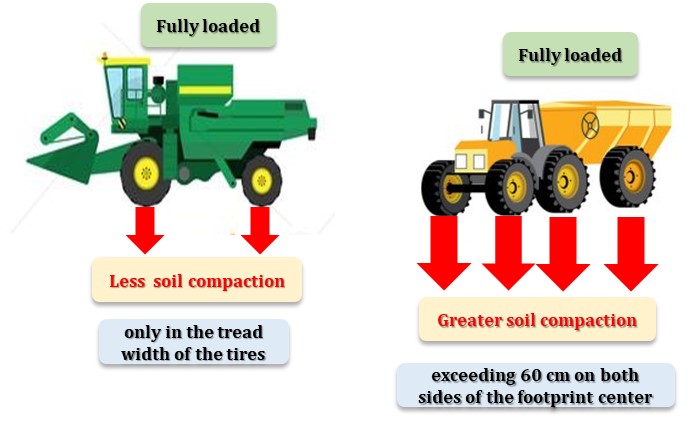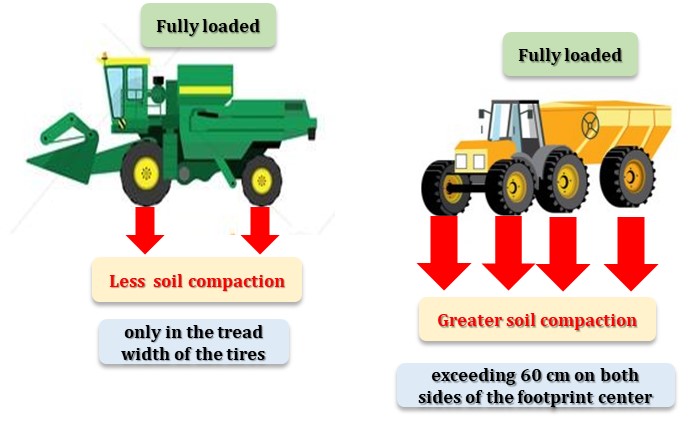Soil compaction caused by the impact of machinery traffic during corn (Zea mays) harvest
Keywords:
combine harvester, tractor, grain cart, penetration resistance, bulk densityAbstract

The aim of this work was to study soil compaction caused by the traffic of two types of combine harvesters and a tractor plus a grain cart with two loading conditions (fully loaded hoppers-empty hoppers) during corn harvest on vertic argiudoll soil by means of direct seeding system. Soil penetration resistance (PR) and soil bulk density (BD) were measured to a depth of 40 cm in five sampling sites. Response variables deter-
minations were also analyzed. The tractor and the fully loaded grain cart traffic caused greater soil compaction in all the sampling depths, exceeding 60 cm on both sides of the footprint center. What is more, the values obtained from PR and BD measurements were higher than those values considered suitable for normal root growth. This was only evident in the tread width of the tires during the passing of the two fully loaded combine harvesters. The analysis of inflation pressures and tire loads used, indicated in some cases, poor concordance between these variables. The analysis also indicated that the tires were inflated to the limit of resistance.
Highlights
- According to the results obtained, it is convenient to develop a controlled traffic farming strategy for harvesting.
- Some machines have tires that do not withstand the demands.
- The repeated passes of machinery caused more compaction than the mass involved.

Published
Issue
Section
License
Aquellos autores/as que tengan publicaciones con esta revista, aceptan las Políticas Editoriales.


